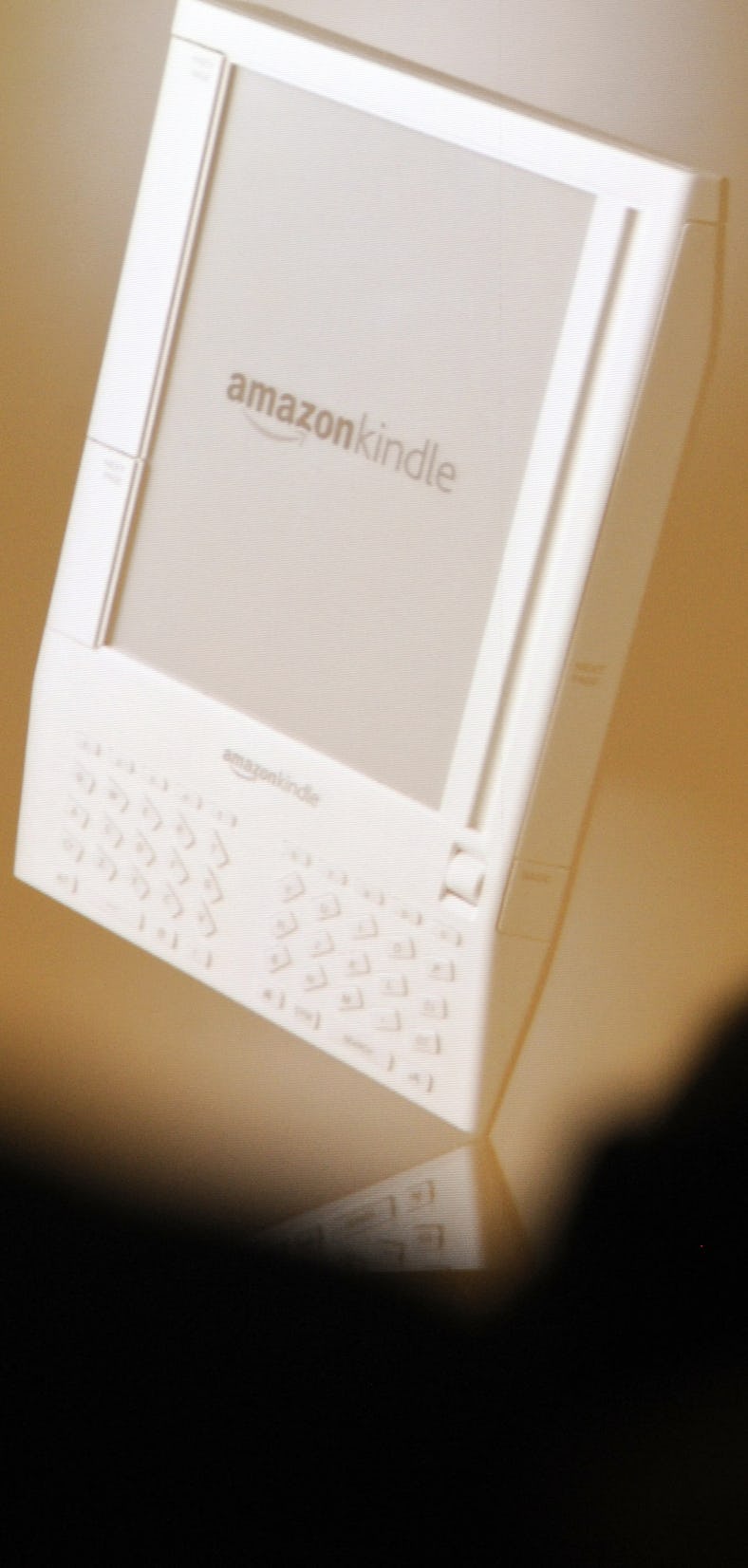16 Years Ago, the First Kindle Introduced One Killer Feature That Changed How We Read
Being able to download books anywhere turned text into an impulse buy.

Amazon’s original Kindle e-reader is not thought of as fondly as Apple’s first iPhone. Despite both launching in 2007, the iPhone on June 29 and the Kindle on November 19, Apple’s rounded, aluminum and plastic smartphone is heralded as a design legend, and most people don’t even know Kindles used to have keyboards.
But 16 years after its debut, the first Kindle is proof that Amazon’s strategy of making the process of buying things online as simple as possible could pay dividends, especially if you could receive them quickly, even instantaneously.
That’s because unlike Amazon’s current Kindle e-readers, or an iPhone for that matter, the first-generation model came with a dedicated 3G internet connection at no additional cost and a protocol the company called “Whispernet” that automatically downloaded content over a cellular connection or Wi-Fi. Whispernet let you download books whether you were at home or not, and start reading nearly instantaneously. It was a radical inclusion that rolled the magic of the iPod, iTunes Store, and iPhone into one strange e-reader.
The weirdest “paperback” ever
The first Kindle was an odd device. Designed to be about the size of a normal paperback book and with a 6-inch E Ink display, it managed to turn heads with its wedge-shaped design (a bit like a book with its front cover folded around back), split keyboard, rear-mounted power switch, scrolling “select wheel,” and large page flipping buttons. It was somehow both utilitarian in the way much of Amazon’s hardware would come to be, and yet futuristic at the same time.
Amazon promised a pretty big future with the Kindle. The e-reader was supposed to hold hundreds of books in a single device and last for multiple days on a single charge, something we still haven’t cracked for all smartphones. Amazon claimed the Kindle’s matte E Ink display was easier to read outside than your computer or smartphone’s glass screens. And it was supposed to be able to download books wherever you had cell reception, often at lower costs than their physical counterparts, without the need for an additional service plan.
Amazon was able to deliver on almost all of those promises, save for, in the eyes of then New York Times tech columnist David Pogue, the e-reader’s $400 price tag and good page-turn buttons. “It’s almost impossible to avoid clicking [the buttons] by accident,” Pogue wrote.
Amazon would, of course, improve on the hardware in further revisions. It streamlined the buttons and keyboard, ditched the scroll wheel on the second and third generations, and settled on a more uniform shape. Amazon even eventually dropped physical controls entirely in favor of touchscreens on the seventh-generation Kindle, a far less tactile and satisfying way to flip pages and one of several advantages competitors like Kobo have over Amazon’s e-readers. But the core ideas were strong.
Downloads, anytime, anywhere
The Kindle changed reading habits and made buying books something that could happen anywhere.
Pogue ultimately felt the Kindle wasn’t perfect at launch, but did hit on what made it compelling (emphasis mine):
If the Kindle isn’t a home run, it’s at least an exciting triple. It gets the important things right: the reading experience, the ruggedness, the super-simple software setup. And that wireless instant download…wow.
The secret sauce seasoning the Kindle since the beginning, besides Amazon’s aggressive book pricing, was Whispernet. Sure, Amazon would eventually make Kindles with 3G or 4G LTE connectivity more expensive than base Wi-Fi models, just like it would eventually charge more for e-readers and tablets without ads on their lock screens. But the magic of being able to get a new book anywhere (and get a pre-ordered book automatically delivered) was addictive. It made trying samples of books — another concept Amazon popularized — ridiculously easy and reading a whole series in a weekend as simple as clicking a few buttons.
I have a distinct memory of going on a backpacking trip in middle school and purposefully hiking to the top of a nearby peak to download a book to read in my tent later that night. Let that be a testament to the battery life of Kindles, the convenience of a consumption device with a built-in internet connection, and how boring a week of hiking can be.
Amazon stopped supporting Whispernet with the fifth-generation Kindle Paperwhite, the first of its e-readers to launch without an option for cellular radios. The move to 5G and the decision to shut down older 3G networks has left only a precious few Kindles with 4G LTE.
One book to rule them all
Besides the technical limitations, moving away from offering constant internet connection has likely saved Amazon more than a little money. And 16 years later, it’s safe to say the promise of the original Kindle has been proven many times over. People are more than happy to read books digitally (besides its e-readers Amazon maintains multiple Kindle apps) and are heavily invested in Amazon’s ecosystem making it harder and harder to leave. The Kindle was weird, yes, but Amazon got the details right.